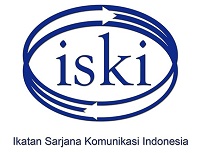Proses Employer Branding PT. Mercedes-Benz Indonesia untuk Meningkatkan Eksistensi Perusahaan
Abstract
Keywords
Full Text:
PDFReferences
Ambler, T., & Barrow, S. (1996). The Employer Brand. The Journal of Brand Management, 185-206.
Backhaus, K., & Tikoo, S. (2004). Conceptualizing and Researching Employer Branding. Career Development International, 501-517.
Biswas, U., Allard, K., Pousette, A., & Harenstam, A. (2017). Understanding Attractive Work in a Globalized World. India and Sweden: Springer.
Chignell, B. (2018, November 29). 11 simple steps to improve your employer branding. Retrieved from CIPHR ALL ABOUT PEOPLE: https://www.ciphr.com/advice/11-ways-improve-employer-brand/
Ferhatovic, A., & Simon, T. (2016). The Process of Adapting the Employer Brand to Attract the Right Employees - A Case Study of How SEB Uses Employer Branding to Go Digitial. Uppsala, Sweden: Uppsala University.
Hankinson, P. (2004). The Internal Brand in Leading UK Charities. Journal of Product & Brand Management, 84-93.
Kotler, Philip dan Nancy Lee. (2005). Corporate Social Responsibility; Doing the Most
Good you’re your Company and Your Cause. NewJersey; John Wiley&Sons, Inc.
Lestari, Dimyati, & Shihab. (2017). Strategic Communications and Corporate Branding:
A Study of Jebsen & Jessen Indonesia Group. MediaTor, 37-52.
Lubecka, A. (2013). Employer branding - a dialogistic communication tool of a competitive employer. Journal of Intercultural Management, 5-16.
Stuss, M., & Herdan , A. (2017). External Employer Branding Tools Used for Attracting Graduates by Energy Companies Listed at Warsaw Stock Exchange. 8th Economics & Finance Conference (pp. 200-213). London: ResearchGate.
Wilden, R., Gudergan, S., & Lings, I. (2010). Employer branding: strategic implications for staff recruitment. Journal of Marketing Management, 56-73.
DOI: https://doi.org/10.29313/mediator.v12i2.4921
Refbacks
- There are currently no refbacks.

This work is licensed under a Creative Commons Attribution 4.0 International License























